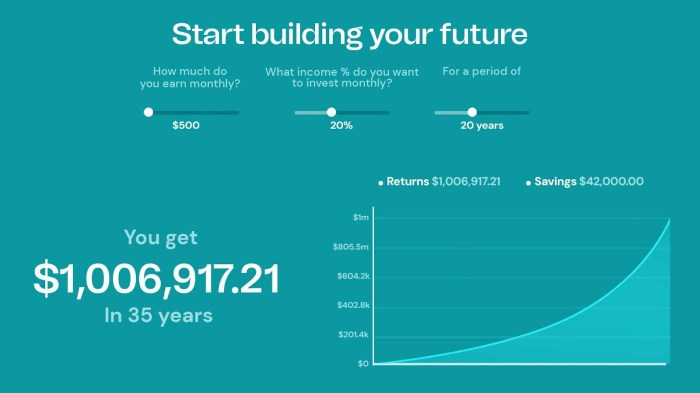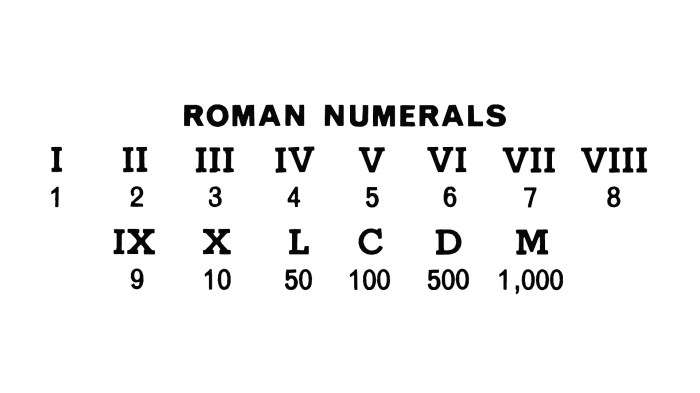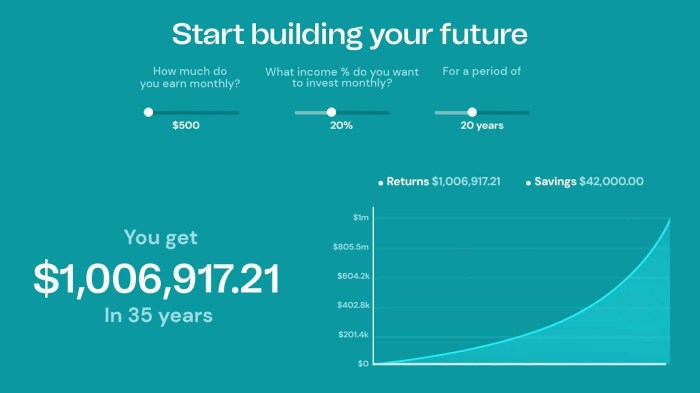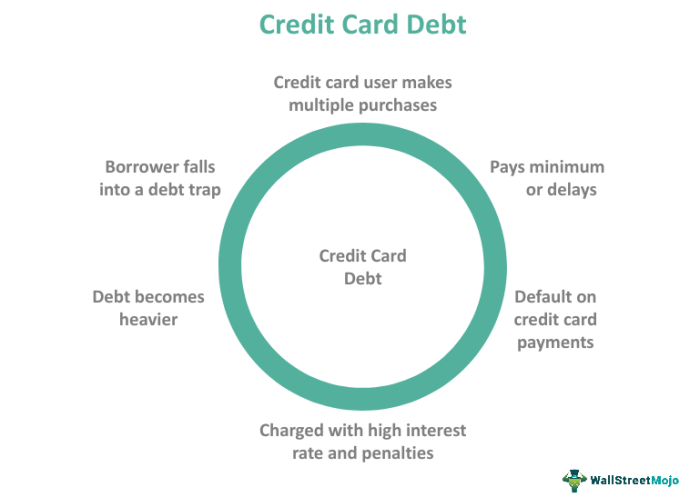How much money do I need to retire? This is a crucial question for anyone planning their financial future. It’s not just about the numbers; it’s about envisioning your ideal retirement lifestyle. From active adventures to quiet contemplation, the amount needed varies greatly depending on your aspirations. This guide delves into the critical factors affecting retirement savings, from defining your goals to creating a realistic budget, and exploring investment strategies.
We’ll also consider the crucial role of Social Security and unexpected events, providing a roadmap to secure your golden years.
We’ll break down the process into manageable steps. First, we’ll explore defining your retirement vision, considering desired activities and potential health needs. Next, we’ll assess your current financial situation, creating a comprehensive budget to understand your starting point. We’ll then estimate future expenses, including healthcare costs and lifestyle changes, essential for accurate savings projections.
Defining Retirement Goals

Retirement planning isn’t just about calculating numbers; it’s about envisioning a fulfilling life beyond the workday. Understanding your desired lifestyle and potential needs is crucial for creating a retirement plan that aligns with your aspirations. This involves more than just a financial calculation; it’s about crafting a life you’ll truly enjoy.Defining your retirement goals involves considering not only your financial needs but also the activities, experiences, and relationships that will make your retirement years meaningful.
A well-defined retirement vision will guide your savings and investment strategies, ensuring that your financial resources support your chosen lifestyle.
Retirement Lifestyle Expectations
Different individuals envision vastly different retirement experiences. Some crave adventure, while others prefer a more tranquil, settled existence. Understanding these varying preferences is essential for tailoring retirement plans to individual needs and desires. Active retirees might plan extensive travel, while others might prefer volunteering or pursuing hobbies close to home. This diversity in lifestyle choices underscores the importance of personalized retirement planning.
Approaches to a Comfortable Retirement
Achieving a comfortable retirement involves more than just sufficient funds. It encompasses a holistic approach that considers financial security, health, and personal fulfillment. A comfortable retirement is not solely about financial independence; it’s about having the financial means to pursue passions and maintain a desired lifestyle. This includes considering expenses like healthcare, travel, and leisure activities.
Importance of Activities, Travel, and Social Engagement
Retirement offers an unparalleled opportunity to explore passions and cultivate meaningful relationships. Considering desired activities, travel plans, and social engagement is vital in crafting a satisfying retirement. Volunteering, joining clubs, pursuing hobbies, and maintaining strong social connections can contribute significantly to a fulfilling retirement experience. For instance, someone who enjoys painting might want to join a local art group, while someone passionate about hiking might prioritize travel to national parks.
These activities add depth and meaning to retirement.
Impact of Health Considerations and Future Needs
Health considerations and potential future needs play a critical role in retirement planning. Unexpected medical expenses can significantly impact retirement savings. Anticipating potential healthcare costs, including long-term care, is essential. Planning for potential future needs, such as caregiving responsibilities, can prevent financial strain during retirement. For example, individuals with pre-existing health conditions might need to factor in higher healthcare costs in their retirement planning.
Comparison of Retirement Lifestyles
| Retirement Lifestyle | Description | Financial Needs (Estimated, Example: US Dollars) |
|---|---|---|
| Active | Travel, volunteering, hobbies, social activities. | $60,000 – $100,000 annually (depending on location, activities, and health) |
| Passive | Relaxation, hobbies, and close social circles. | $40,000 – $70,000 annually (depending on location, activities, and health) |
| Adventurous | Extensive travel, exploring new places, engaging in outdoor activities. | $80,000 – $150,000 annually (depending on location, activities, and health) |
Financial needs for retirement can vary significantly depending on the lifestyle chosen. The table above provides a basic comparison, but individual circumstances will influence these estimates.
Assessing Current Financial Situation
Knowing your current financial standing is crucial for planning a successful retirement. This involves a comprehensive look at your income, expenses, and savings, allowing you to identify areas for improvement and potential adjustments to your retirement strategy. Understanding your current financial reality is the bedrock upon which a sound retirement plan is built.A clear picture of your current finances empowers you to make informed decisions, develop realistic retirement goals, and potentially accelerate your progress towards your financial aspirations.
It’s a proactive approach to understanding where you are, where you want to be, and how to get there.
Evaluating Income Sources
Understanding all sources of income is vital for accurate financial planning. This includes not just your primary salary but also any supplemental income from investments, side hustles, rental properties, or other sources. Categorizing these sources helps in understanding the overall financial picture and aids in determining potential income streams in the future. A comprehensive income assessment provides a solid foundation for future budgeting and financial strategy.
Figuring out how much money I need to retire can feel overwhelming, especially during the holidays. It’s easy to get caught up in the festive spirit and forget about financial planning. However, prioritizing self-care during this time is crucial, and can actually help you stay focused on your retirement goals. For example, check out these 5 tips for self-care during the holidays 5 tips for self care during the holidays to help you relax and avoid overspending, which will ultimately help you save more for retirement.
Ultimately, a well-balanced approach, including mindful self-care and smart financial strategies, will pave the way for a secure retirement.
Identifying and Categorizing Expenses
Expenses are just as critical as income in understanding your financial health. This involves meticulous categorization of all expenses, from necessities like housing and food to discretionary spending like entertainment and travel. Identifying and separating fixed expenses (those that remain constant, like mortgage payments) from variable expenses (those that fluctuate, like dining out) helps in creating a more accurate budget.
Accurate categorization allows for a precise understanding of your spending habits and potential savings opportunities.
Creating a Comprehensive Budget
A well-structured budget is essential for managing your finances effectively. It should encompass not only your current expenses but also potential future expenses, such as healthcare costs or unexpected emergencies. A comprehensive budget should account for retirement contributions, and potential increases in living expenses over time. Planning for these future costs is vital for ensuring a secure retirement.
Example Budget Template
- Fixed Expenses: Rent/Mortgage, Utilities, Loans (Car, Student), Insurance (Health, Auto, Home), Subscriptions
- Variable Expenses: Groceries, Transportation, Dining Out, Entertainment, Clothing, Personal Care, Gifts, Travel
- Savings & Investments: Retirement Contributions (401k, IRA), Emergency Fund, Other Investments
Tracking and Analyzing Spending Habits
Regularly tracking your spending habits is crucial for identifying areas where you can potentially save. Using budgeting apps or spreadsheets, you can monitor your spending across different categories, allowing for better control over your finances. Identifying patterns in spending allows for the creation of targeted savings plans. This helps in creating a more structured approach to financial management and highlights areas where adjustments might be beneficial.
Step-by-Step Process for Assessing Financial Health
| Step | Action |
|---|---|
| 1 | List all sources of income. Include salary, investments, side hustles, and any other revenue streams. |
| 2 | Categorize all expenses. Divide them into fixed (e.g., rent, mortgage) and variable (e.g., dining out, entertainment) expenses. |
| 3 | Create a comprehensive budget. Include current expenses and projected future costs (e.g., healthcare, retirement). |
| 4 | Track spending for a month. Record every expense in your budget categories. |
| 5 | Analyze spending patterns. Identify areas where you can potentially reduce expenses. |
| 6 | Review and adjust your budget regularly. This ensures your financial plan remains aligned with your current needs and goals. |
Estimating Future Expenses: How Much Money Do I Need To Retire
Retirement planning isn’t just about saving; it’s about anticipating the future. Understanding your likely expenses in retirement is crucial for accurately calculating your required savings and making informed decisions about your lifestyle. This crucial step involves considering factors that can significantly impact your financial well-being, including the rising cost of healthcare, housing adjustments, and potential lifestyle changes.
Anticipating Healthcare Costs
Healthcare expenses often rise substantially throughout retirement. The costs of prescription drugs, doctor visits, and potential long-term care can significantly impact your retirement savings. Accurately projecting these costs is essential for ensuring adequate financial security. To estimate healthcare expenses, consider the following:
- Current health status: Your current health condition will significantly influence future healthcare needs. Someone with pre-existing conditions may need more extensive and costly care. This will affect your future healthcare costs and influence your savings plan.
- Projected inflation rates: Inflation significantly impacts the cost of healthcare services. Use current inflation rate projections to estimate the rising cost of treatments, medication, and insurance premiums. For example, if inflation is projected to average 3% annually, healthcare costs are likely to increase by 3% each year.
- Insurance coverage: The type and extent of your health insurance coverage will influence the amount you need to save. Consider the gap between covered expenses and potential out-of-pocket costs, as this will impact the required amount of savings.
- Potential long-term care needs: As individuals age, the possibility of long-term care increases. This can involve assisted living, nursing homes, or in-home care, all of which can be quite expensive. Factors like the potential need for long-term care should be factored into your retirement plan.
Evaluating Housing Needs and Costs
Housing expenses can also fluctuate during retirement. Whether you wish to maintain your current home, downsize, or move to a different location, the associated costs will vary significantly. Accurate projections are essential for ensuring you have sufficient funds to cover these costs. The following steps will help you evaluate potential housing needs and costs:
- Current home valuation: Assess the current market value of your home and factor in potential appreciation or depreciation over time. Using historical data and current market trends will give a more accurate assessment.
- Potential downsizing costs: If downsizing is a possibility, factor in potential moving costs, closing costs, and the sale of your current home. Calculate the difference in expenses between your current home and a potential smaller home, and factor in potential closing costs.
- Alternative housing options: Investigate alternative housing options such as assisted living facilities or retirement communities. These options often come with different fees and costs, and should be included in your cost estimations.
- Location considerations: The cost of living in different areas can significantly vary. Consider the potential cost of living in various areas and how this might impact your retirement budget. Factor in potential property taxes and maintenance costs.
Impact of Inflation on Retirement Savings
Inflation erodes the purchasing power of your savings over time. If your retirement income doesn’t keep pace with inflation, your standard of living could decline. The following steps will help you understand the impact of inflation:
- Inflation rate projections: Research and consider potential inflation rates over the timeframe of your retirement. Reliable sources like government agencies and financial institutions provide historical data and projections.
- Adjusting savings for inflation: Calculate the amount your savings need to grow annually to maintain their purchasing power, considering projected inflation rates. For example, if inflation is 3%, your savings need to grow by 3% annually to keep up.
- Adjusting expenses for inflation: Account for how inflation will affect the cost of your retirement expenses. This ensures that your retirement income can maintain its purchasing power.
Projected Costs for Different Scenarios
To illustrate the importance of estimating future expenses, here are some examples of projected costs for various retirement scenarios:
| Scenario | Estimated Healthcare Costs (Annual) | Estimated Housing Costs (Annual) | Estimated Lifestyle Costs (Annual) |
|---|---|---|---|
| Maintaining Current Lifestyle | $10,000 – $15,000 | $20,000 – $25,000 | $12,000 – $18,000 |
| Downsizing | $8,000 – $12,000 | $15,000 – $20,000 | $10,000 – $15,000 |
| Moving to a Lower Cost of Living | $7,000 – $10,000 | $10,000 – $15,000 | $8,000 – $12,000 |
Note: These are examples and may not reflect individual circumstances. Consult with a financial advisor for personalized projections.
Calculating Retirement Savings Needs

Knowing how much you need to save for retirement is crucial for a secure financial future. This stage involves translating your retirement goals and expenses into a tangible savings target. Accurate calculation methods are essential for creating a realistic plan and avoiding underestimating the financial demands of retirement.
Various methods exist for estimating retirement savings needs, each with its own strengths and weaknesses. Choosing the right approach depends on your individual circumstances, risk tolerance, and desired level of retirement security. A key aspect is incorporating your estimated future expenses, which vary significantly depending on lifestyle choices and potential healthcare costs.
Retirement Savings Calculation Methods
Several approaches can help determine how much you need to save for retirement. These methods differ in their complexity and the assumptions they make. Understanding these nuances is vital for making informed decisions.
- The Simple Rule of Thumb: This approach uses a simplified formula to estimate savings. For instance, some financial advisors suggest saving 10-15% of your income throughout your career. This approach is easy to understand but may not account for individual circumstances or future inflation.
- The 4% Rule: This rule suggests that a portfolio can safely withdraw 4% annually in retirement without depleting the principal. This assumes a balanced portfolio and a reasonable rate of return. However, this rule is highly sensitive to the initial portfolio value and the expected rate of return.
- The Financial Planning Software Approach: Software tools offer comprehensive retirement planning, incorporating various factors such as estimated expenses, expected returns, and personal financial goals. These programs often provide detailed reports and projections based on user input, including income, investments, and expenses. For example, many online calculators will consider your age, expected retirement age, current savings, desired retirement lifestyle, and anticipated healthcare costs.
- The Present Value of Future Expenses: This method calculates the current worth of future expenses by discounting them back to the present. This accounts for the time value of money and the impact of inflation. A critical component of this approach is accurately estimating future inflation rates.
Comparing and Contrasting Calculation Tools
Different retirement savings calculators and formulas have varying strengths and weaknesses. Carefully considering these factors is important for selecting the right method.
| Method | Advantages | Disadvantages |
|---|---|---|
| Simple Rule of Thumb | Easy to understand and implement. | May not account for individual circumstances, inflation, or desired retirement lifestyle. |
| 4% Rule | Provides a simple benchmark for withdrawal rates. | Highly sensitive to portfolio performance and initial investment. Not suitable for individuals with unique financial situations. |
| Financial Planning Software | Comprehensive, incorporates multiple variables, and provides detailed projections. | Can be complex to use and may require inputting many personal details. Results depend heavily on user-provided data accuracy. |
| Present Value of Future Expenses | Accounts for the time value of money and inflation. | Requires accurate estimations of future expenses and inflation rates, which can be challenging. |
Incorporating Future Expenses
Accurately estimating future expenses is critical for creating a realistic retirement savings plan. Consider these factors:
- Healthcare Costs: Healthcare costs often increase significantly with age. Be sure to factor in potential medical expenses, including insurance premiums, co-pays, and long-term care.
- Inflation: Inflation erodes the purchasing power of your savings over time. Account for expected inflation rates when calculating future expenses.
- Lifestyle Changes: Your lifestyle in retirement might differ from your current one. Factor in potential travel, hobbies, or other expenses.
A realistic approach to retirement planning involves careful consideration of your future expenses, including healthcare costs, inflation, and lifestyle changes.
Exploring Investment Strategies
Now that you’ve established your retirement goals, assessed your finances, and projected future expenses, it’s time to delve into the crucial aspect of investment strategies. Choosing the right investments is paramount to achieving your retirement savings targets. Understanding different investment options, their associated risks, and how to construct a diversified portfolio are essential for long-term financial security.
Investment Options and Potential Returns
A variety of investment options are available, each with its own potential return and level of risk. Common choices include stocks, bonds, real estate, mutual funds, and exchange-traded funds (ETFs). Stocks represent ownership in a company, and their value fluctuates based on market conditions and company performance. Bonds are essentially loans to a company or government, offering a fixed income stream.
Real estate involves owning physical property, which can generate rental income and appreciate in value over time. Mutual funds and ETFs pool money from multiple investors to invest in a diversified portfolio of assets.
Risk Tolerance and Investment Strategies
A key factor in selecting investments is your risk tolerance. Risk tolerance refers to your comfort level with potential losses. High-growth investments, like stocks, typically offer higher potential returns but carry greater risk of loss. Conversely, lower-risk investments, like bonds, usually offer more stable returns but with less potential for significant gains. A well-constructed portfolio considers your risk tolerance and aligns investments with your comfort level and financial goals.
Diversified Investment Portfolios for Retirement
A diversified portfolio is crucial for mitigating risk. It spreads your investments across different asset classes, reducing the impact of any single investment’s poor performance. For example, a portfolio might include a mix of stocks, bonds, and potentially real estate or other alternative investments. The precise allocation depends on individual circumstances, risk tolerance, and time horizon until retirement.
| Asset Class | Description | Potential Return | Risk Level |
|---|---|---|---|
| Stocks | Ownership in a company | High | High |
| Bonds | Loans to a company or government | Moderate | Low |
| Real Estate | Owning physical property | Moderate to High | Moderate |
Impact of Investment Timing and Market Conditions
Investment timing and market conditions significantly influence retirement savings. Market fluctuations can lead to periods of higher or lower returns. For instance, the 2008 financial crisis saw significant stock market declines. It’s important to have a long-term perspective and avoid making emotional investment decisions based on short-term market swings.
A long-term investment strategy, focusing on the bigger picture, helps to weather market fluctuations.
Fees and Expenses in Investment Options
Understanding and considering fees and expenses associated with investment options is vital. These fees can erode returns over time. Different investment vehicles, such as mutual funds and ETFs, have varying expense ratios. Investment advisors can provide guidance on choosing options with appropriate fees and expenses.
Examples include management fees for mutual funds, transaction costs for buying and selling stocks, and real estate taxes and maintenance costs. Carefully evaluating these costs is crucial to maximizing your retirement savings.
Considering Social Security Benefits
Social Security is a crucial component of retirement planning, often providing a significant portion of retirement income. Understanding how these benefits are calculated and how claiming strategies impact your future income is essential for building a secure financial future. This section will delve into the specifics of Social Security benefits, highlighting their potential impact and the importance of informed claiming decisions.
Figuring out how much money I need to retire feels like a never-ending math problem, right? But it’s not just about the numbers; our obsession with external validation, like needing approval for every financial decision, is actually a major roadblock. For example, if you’re constantly seeking approval for your retirement plan, it can seriously impact your self-confidence. You might be avoiding important financial decisions, like saving aggressively, due to this.
Ultimately, focusing on building a strong sense of self-worth and financial literacy is key to finally landing on a retirement number that feels right. Our obsession with approvals is destroying our self-esteem is a great resource for exploring this further. So, how much money do I need to retire? That’s a conversation I’m ready to have, now that I’m prioritizing self-reliance over external approvals.
Social Security Benefit Calculation
Social Security benefits are calculated based on your earnings history. A key factor is your average indexed monthly earnings (AIME). This is the average of your highest 35 years of earnings, adjusted for inflation. The formula for calculating benefits is complex and involves a progressive benefit schedule. Higher lifetime earnings generally lead to higher benefits.
The exact calculation involves numerous factors, including the specific year you reach full retirement age and the claiming strategy chosen.
Impact on Retirement Income
Social Security benefits can significantly impact your overall retirement income. For many retirees, Social Security represents a substantial portion of their monthly income, helping bridge the gap between savings and expenses. Understanding the potential impact allows you to better assess your overall retirement needs and savings goals. For example, a retiree with a higher AIME will likely receive a higher monthly benefit than someone with a lower AIME, assuming the same claiming strategy.
Social Security Claiming Strategies
The timing of your Social Security claim significantly affects the amount of benefits you receive. Understanding different claiming strategies is paramount to maximizing your retirement income. Choosing the right strategy requires careful consideration of your individual circumstances, including your projected lifespan, health, and financial needs.
Impact of Early or Delayed Claiming
Claiming benefits before your full retirement age (FRA) results in a lower monthly benefit, but you receive benefits sooner. Conversely, delaying claiming beyond your FRA can increase your monthly benefit, but you have to wait longer to start receiving payments. A crucial aspect to consider is the impact on your life expectancy. If you expect to live longer, delaying claiming may yield a higher lifetime benefit.
For example, a healthy individual who anticipates living well into their 80s might choose to delay claiming to maximize their benefits.
Different Claiming Scenarios and Impact
| Claiming Age | Benefit Amount (Example) | Impact on Total Lifetime Benefit |
|---|---|---|
| Full Retirement Age (FRA) | $1,500 per month | Average lifetime benefit |
| Early Retirement Age (ERA) | $1,200 per month | Lower lifetime benefit |
| Delayed Retirement Age (DRA) | $1,800 per month | Higher lifetime benefit |
The table above provides a simplified illustration of potential benefit amounts. Real-world scenarios will vary based on individual earnings history and claiming strategies. Consult with a financial advisor for personalized guidance.
Potential Changes in Social Security Benefits Over Time
Social Security benefits are subject to periodic adjustments. These adjustments are usually based on factors like inflation and economic conditions. Understanding the potential for changes over time is important for long-term retirement planning. This helps you anticipate potential adjustments and incorporate them into your financial strategy. The impact of such adjustments is critical to consider in the long term.
Analyzing Retirement Income Sources
Retirement planning isn’t just about saving and investing; it’s about creating a sustainable income stream to support your lifestyle throughout your golden years. This crucial aspect involves exploring various income sources beyond traditional savings and investments to ensure a comfortable and secure retirement. Understanding these options allows for a more comprehensive and personalized approach to financial planning.Beyond the familiar avenues of savings and investments, a well-rounded retirement plan considers alternative income streams.
This proactive approach acknowledges that life expectancy and economic conditions can fluctuate, necessitating adaptability and diversification. This exploration of additional income sources is essential for a resilient retirement plan.
Rental Income
Rental income can provide a significant portion of retirement income. Owning rental properties can generate passive income, which is crucial for offsetting living expenses and supplementing other retirement income. Careful consideration of property management, maintenance, and potential vacancies is vital. Understanding local market trends and property values is critical to ensure a profitable investment. For example, a retired couple might consider renting out a spare room or a small apartment to generate additional cash flow.
This could be a supplement to existing income or a substantial part of the retirement plan, depending on the property and market conditions.
Part-Time Work
Part-time work in retirement offers a flexible way to supplement retirement income. This can range from consulting or freelancing to a part-time job in a chosen field. The decision to engage in part-time work depends on factors such as health, personal interests, and financial needs. This can provide a satisfying sense of purpose and income while allowing for a more gradual transition into retirement.
For instance, a retired teacher might offer tutoring services, or a former engineer might consult on projects related to their expertise.
Tax Implications on Retirement Income
Understanding the tax implications of different retirement income sources is crucial. Different sources of retirement income are taxed differently. For example, rental income is taxed as ordinary income, while capital gains from investments are taxed at a different rate. Knowing the tax implications of each source allows for proactive tax planning to minimize the tax burden and maximize the net income available for retirement.
Tax laws can change, so staying informed and consulting with a financial advisor is always recommended.
Annuities and Other Income-Generating Products
Annuities and other income-generating products can be powerful tools for retirement income planning. Annuities offer guaranteed income streams, providing a sense of financial security. However, the specific terms and conditions of annuities should be thoroughly examined before committing. Other products such as dividend-paying stocks or bonds can also generate a passive income stream. Understanding the pros and cons of each product and their suitability to individual circumstances is key.
For example, a fixed annuity provides a guaranteed payout for a set period or for life, whereas a variable annuity offers potential higher returns but with more risk.
Examples of Retirement Income Streams, How much money do i need to retire
| Income Stream | Pros | Cons |
|---|---|---|
| Rental Income | Passive income, potential for high returns | Property management, maintenance costs, vacancy risk |
| Part-Time Work | Flexible income, sense of purpose | Potential for burnout, time constraints |
| Annuities | Guaranteed income stream, financial security | Potential for lower returns compared to other investments |
| Dividends | Regular income, diversification | Return dependent on company performance |
Careful consideration of all income sources, coupled with a realistic assessment of expenses, will create a more comprehensive and personalized retirement plan. This approach allows for a smoother transition into retirement and the enjoyment of a fulfilling golden age.
Creating a Retirement Budget
Retirement planning isn’t just about saving; it’s about meticulously crafting a budget that aligns with your anticipated lifestyle and financial needs. A comprehensive retirement budget acts as a roadmap, guiding you towards financial security and peace of mind during your golden years. It allows you to proactively manage your funds and ensures you can maintain your desired standard of living without compromising your long-term financial health.A well-structured retirement budget is more than just a list of expenses; it’s a dynamic tool that adapts to changing circumstances.
It helps you visualize your future financial position, allowing for adjustments based on market fluctuations or personal life events. This proactive approach empowers you to confidently navigate the complexities of retirement and confidently meet your financial goals.
Steps to Creating a Comprehensive Retirement Budget
A well-defined retirement budget should encompass all anticipated expenses, from essential living costs to discretionary spending. It’s crucial to accurately project your needs to ensure a comfortable and fulfilling retirement. Follow these steps:
- Detailed Expense Categorization: Carefully categorize all anticipated expenses into essential and discretionary categories. This includes housing, utilities, food, healthcare, transportation, entertainment, travel, and other personal expenses. Thoroughly review your current spending patterns to gain a clear understanding of your spending habits. This provides a solid baseline for future projections.
- Estimating Future Needs: Accurately project future expenses based on inflation, potential healthcare costs, and your desired lifestyle. Factor in potential increases in healthcare premiums, medications, and other medical expenses. Consider the potential need for long-term care and its associated costs. Don’t underestimate the importance of inflation, as prices for goods and services tend to increase over time.
- Analyzing Income Sources: Determine all anticipated sources of retirement income, including Social Security benefits, pensions, and investment returns. Realistic projections of investment returns are vital for long-term financial security.
- Balancing Income and Expenses: Critically compare your estimated retirement income with your projected expenses. Ensure a sustainable balance between your income and expenses. If expenses exceed income, you’ll need to adjust your spending or increase savings to bridge the gap.
Importance of Allocating Funds for Various Needs
Retirement planning requires careful allocation of funds to ensure your financial security. Different expenses require different levels of allocation. For example, healthcare costs often increase with age, requiring substantial provisions in the budget.
- Healthcare Costs: Allocate a significant portion of your budget for potential healthcare needs, including doctor visits, medications, and long-term care. Historical data and projections of healthcare costs are valuable for accurate budgeting.
- Housing Costs: Evaluate housing expenses, considering potential mortgage payments, property taxes, and maintenance costs. Assess whether you’ll need to downsize or relocate.
- Lifestyle Expenses: Allocate funds for activities and hobbies that bring you joy and fulfillment during retirement. This could include travel, entertainment, and personal interests.
Adjusting the Retirement Budget
Retirement budgets are not static; they require periodic adjustments. Market fluctuations, personal circumstances, or unforeseen events can impact your financial plans. Adapt your budget accordingly.
Figuring out how much money you need to retire can feel daunting, but effective project management can help! Tracking your expenses and income, and planning for potential future costs, is crucial. Using tools like 10 must have personal project management tools to organize your finances, create budgets, and monitor investments will significantly streamline the process. This organized approach can ultimately give you a clearer picture of your retirement savings goals and how much money you truly need to achieve financial freedom.
- Market Fluctuations: Investment returns can vary significantly, impacting your portfolio value. Adjust your budget to accommodate potential fluctuations in investment returns.
- Personal Circumstances: Unexpected life events, such as job loss or health issues, may necessitate changes to your budget. Be prepared to adjust your spending habits or increase savings as needed.
Examples of Retirement Spending Plans
Different individuals have varying retirement spending needs. Consider these examples to personalize your retirement budget:
- Active Lifestyle: Individuals with active lifestyles and travel plans may require higher spending allocations for travel, entertainment, and activities. Adjust the budget to account for this active lifestyle.
- Simple Lifestyle: Individuals who prefer a simpler lifestyle with lower expenses can adjust their budget accordingly. Focus on essential expenses and prioritize savings.
Retirement Expense Budget Allocation Table
This table provides a sample framework for allocating funds to different retirement expenses. Remember to customize this table to match your specific needs and circumstances.
| Expense Category | Estimated Monthly Allocation (USD) |
|---|---|
| Housing | 1,500 |
| Food | 500 |
| Healthcare | 750 |
| Transportation | 250 |
| Entertainment & Hobbies | 300 |
| Travel | 200 |
| Miscellaneous | 200 |
| Total | 3,650 |
Planning for Unexpected Events
Retirement, while a time of freedom and enjoyment, can also bring unforeseen circumstances. Having a plan to navigate unexpected events is crucial for maintaining financial security and peace of mind during this stage of life. These events can range from significant health issues to job loss or market fluctuations, all of which can significantly impact retirement savings.A robust retirement plan needs to account for these potential disruptions.
This involves understanding the potential financial impacts of various scenarios, developing contingency plans, and building in safeguards to protect your hard-earned savings.
Strategies for Handling Unexpected Events
A proactive approach to unexpected events involves several strategies. These strategies can help to mitigate the impact of unforeseen circumstances on your retirement savings and lifestyle. It’s crucial to create a flexible and adaptable plan that allows you to adjust to changing circumstances.
- Building a robust emergency fund. A significant emergency fund is essential. This fund should be readily accessible to cover unexpected expenses without jeopardizing your retirement nest egg. Aim for 3-6 months of living expenses, or even more if possible. This cushion can provide peace of mind during times of uncertainty, ensuring you can handle unexpected medical bills, home repairs, or other emergencies without dipping into your retirement savings.
Having a dedicated emergency fund is critical in managing unforeseen expenses and maintaining financial stability.
- Protecting retirement savings from risks. Inflation and market downturns are constant threats to retirement savings. Inflation erodes the purchasing power of your savings over time, while market downturns can lead to significant losses. Diversifying your investments, choosing investments with a lower correlation to the market, and using strategies like dollar-cost averaging can help mitigate these risks. Consider investments with inflation-hedging properties to help offset the impact of inflation on your savings.
- Understanding the role of insurance. Appropriate insurance coverage is vital. Health insurance, long-term care insurance, and life insurance can help protect your retirement assets from the financial burdens of unforeseen health events. Consider the potential costs of long-term care, as they can significantly deplete retirement funds if not planned for.
Developing a Contingency Plan
A comprehensive contingency plan is essential for navigating unexpected events. This plan should Artikel specific steps to take in various scenarios, such as job loss, significant illness, or market downturns. It should be adaptable to different situations and be reviewed periodically to ensure its relevance and effectiveness.
- Creating a detailed budget. A detailed budget that Artikels your income and expenses is a critical component of any contingency plan. Knowing your income sources and how much you spend each month allows you to identify potential gaps and plan for them. A detailed budget allows you to see where your money is going and identify areas where you can save or adjust your spending to better manage your finances.
- Establishing a communication strategy. Establishing a clear communication strategy with your family or financial advisor is crucial in times of need. Sharing your plans and goals with those you trust can provide support and ensure that everyone is on the same page during challenging situations. A well-defined communication strategy allows for a unified response and fosters trust and support during challenging times.
- Reviewing and updating your plan regularly. Your contingency plan is not a static document. Life events, market conditions, and personal circumstances can change. Regular reviews and updates are essential to ensure your plan remains relevant and effective in addressing your current needs. Regular review allows for adjustments to be made to account for changes in your financial situation and personal circumstances.
Closing Notes
In conclusion, determining how much money you need to retire is a multifaceted process. By carefully considering your retirement goals, assessing your current financial standing, and estimating future expenses, you can develop a personalized retirement savings plan. Understanding investment strategies, Social Security benefits, and contingency plans for unexpected events are equally important. This comprehensive guide provides a structured approach to planning for your financial security in retirement, empowering you to make informed decisions and achieve your retirement dreams.











